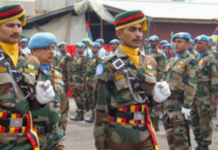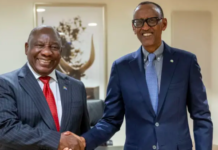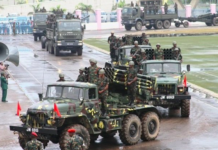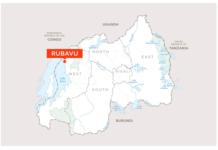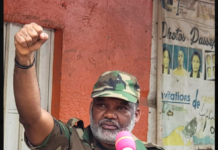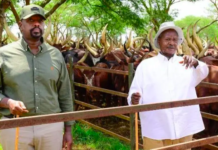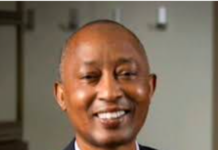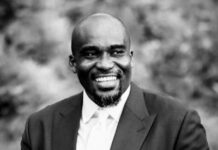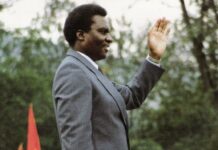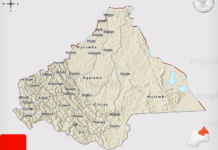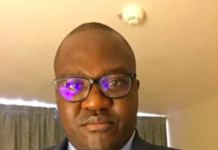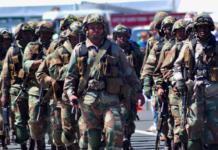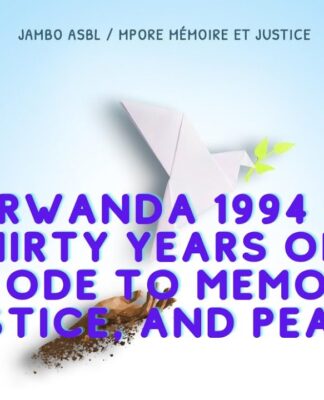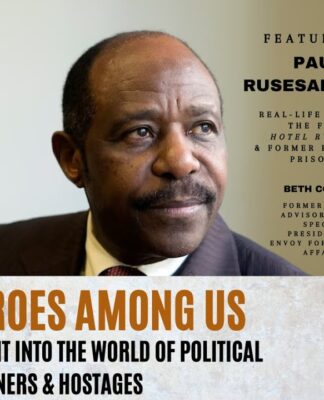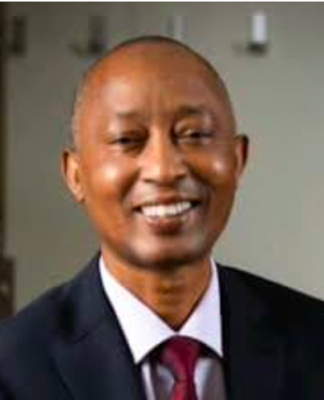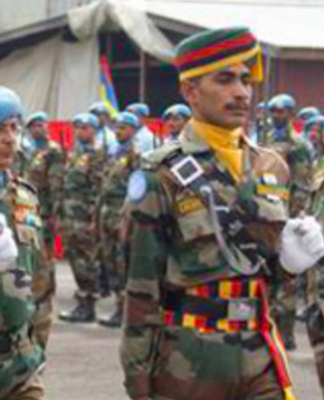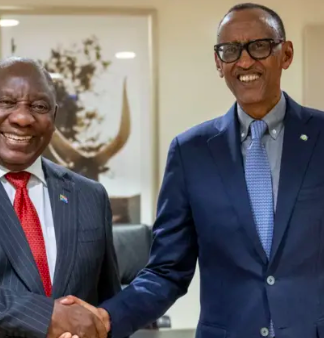“Big strong boys for farm work. Four hundred, seven hundred, eight hundred, nine hundred, one thousand, one thousand one hundred. Sold for one thousand two hundred dinars”. 400 dollars a person. People sold off, in 2017!!
Imagine you were a reporter at a major international cable news company and received a video depicting what appears to be a human auction in Libya. What would you do with that footage? What steps would you take for the whole world to know what’s going on in that Northern African country?
When she received this footage at her office in CNN, she couldn’t believe her eyes. Could it be possible?
“When we received that first video that depicted men being auctioned off, it just seemed so unexplainable that this could be slavery in 2017 that we could be witnessing human beings being auctioned off.”
After authenticating the video, she made a decision that was going to change her life and change the lives of hundred of people who were held and trafficked in the North African failed state: she decided to go and check for herself.
She knew it wasn’t going to be easy, but she didn’t hesitate a bit. She put together a team and travelled to Tripoli. Her plan? To go undercover and witness an auction.
She had found out that migrants who were trying to travel to Europe were, in too many cases, held captive in warehouses by the traffickers they had paid to help them cross the Mediterranean. Why? Simply to try and get more money from them.
“About a year ago, it became obvious to us that the traffickers were looking at these warehouses full of migrants and wondering how they could make money out of them. And the answer was selling them.”
When she arrived in Tripoli, she was able to confirm that the type of auctions she’d seen on the footage were going on in various part of country several times a week. With the help of their contact, they travelled to a neighbourhood in the suburbs of Tripoli where one of those auctions were taking place. They pretended to look for missing person so no one would suspect what they were up to.
They were ushered in a big courtyard. It was a large house similar to neighboring houses except that the inner courtyard was lit by large spots that almost blinded you. They adjusted the concealed cameras they were carrying and waited for the auction to start.
There, in the middle of the night, men were paraded in front of buyers and sold off like cattle. 400 dinars, 500 dinars, the price tag kept escalading and men bought one by one!
She could not believe her eyes! In that night alone, twelve men from Niger were sold in the span of six or seven minutes.
After the auction, she tried to say a few words for the camera, but it was too much, the young woman was lost for words.
“They bring out what they kept referring to in Arabic as ‘the merchandise’. I don’t know what to say. This is one of the most unbelievable thing I’ve ever seen.”
After that undercover stunt at an auction house, she went back to Tripoli and asked for the authorisation to speak with migrants held in the immigration centres. It was just as unsettling as the market she had visited in the suburbs: hundreds of young men from many sub-Saharan countries, supposedly ‘saved’ from traffickers’ warehouses, to be held here before to be deported to their countries.
It was an overcrowded building with concrete walls on the outside and a large room, a kind of big hangar partitioned by metal fences. Another prison for these poor souls in search of a better future!
The place full of young men from different parts of Africa, Nigeria, Erythrea, Ghana, Niger, all impatient to get out of there. The moment she came in the room, the young men came to her as though they had been waiting for someone they could tell their stories to. Harrowing tales of abuse they suffered from the hands of the traffickers – as proven by the scars on their bodies – and the stories of so many amongst them who had been sold as well before managing to escape or freed after repaying ‘their debt’.
CNN shared the videos of the auctions with the Libyan authorities, who promised to investigate it. There is no evidence they ever did.
The video aired on CNN on November 13, 2017, and was immediately relayed by media around the world, causing outrage across the globe! How was it possible that people would organize the sale of human beings, in places barely hidden, to people who would use them in the most ungrateful work, and this, 200 years after the abolition of the transatlantic slave trade and slavery which remains one of the greatest abominations in the history of the world.
It did not take long before the newspapers revealed the story of Italy’s deal with the Libyan government to prevent migrants from crossing the Mediterranean. And those, with the blessing of the countries of the European Union!
Thank God the story sparked so much outrage in the world and didn’t leave anyone indifferent, which is a big achievement in these times where we have become so numb to the most horrible images, that we often miss the most important tragedies.
One of the persons who saw this CNN video and could not contain his outrage and sadness over this modern age slavery, was a man, a French media personality of African descent, in France.
Immediately after CNN published its report on the slave auctions in Libya, he posted a personal video message on social media.
“I think I have never been so angry and sad as I am now. I, a descendant of slaves, I whose ancestors were brought from Africa to be used like workhorses in the new world, I discover that at the beginning of this 21st century, at the end of the year 2017, I discover that in Libya, what we were afraid of after the different agreements between [Europe and Libya], Africans are sold. Young people, our young people, they are locked in cages and then sold to the highest bidder. I, a slave descendant, I hate what I see, I wonder what must be done after that. You do not understand what is at play here? The future of humanity is at stake, when human beings are able to sell other human beings. How far do we go to make ourselves heard? And here, I am addressing African leaders, get up, do something!”
The man on the video later explained he almost deleted the video in the minutes after he’d recorded it, thinking it was too passionate, too angry. I am glad he didn’t delete it. The video went viral just moments after he posted it online. Within a few days, it had been seen more than a million times. Today, less than a year after he posted it, it’s been viewed more than 4 million times.
Encouraged by the instant reaction to his first video, he did a second video calling upon people who are revolted by the atrocities suffered by blacks in Libya to stage a protest in front of the Embassy of Libya in Paris.
The reaction went much further than he ever dreamt of: not only did hundreds protest in Paris, the same protest took place before the Libyan Embassies in Brussels, London, Bamako, Conakry, Dakar and many other capitals in the world.
Who are this man and this woman, who didn’t even know each other and who have been linked in this story only by the magic of images and social networks?
Today, I am inspired by Nima Elbagir of Sudan, the courageous reporter who went undercover in Libya to bring this story to the world, and Claudy Siar, the man in France who called for the world to protest and act to stop this.
Nima Elbagir was born in Khartoum in 1978. Her father, Dr Ahmed Abdullah Elbagir, was a renown journalist who. Before her birth, her parents fled to Egypt. When her mother, Ibtisam Affan , was pregnant with her in Cairo, her father was captured and taken back to Sudan where he was jailed for the next four years. Nima was to see him for the first time when she was three.
After her father’s release from jail, the family moved to the United Kingdom. She was eight years old when they moved back to Sudan. In the 1980s, Ahmed Abdullah Elbagir founded the newspaper El Khartoum in the 1980s, of which her mother was the publisher. Nima is proud of her family heritage, her rebellious father and her mother, the first woman publisher in Sudan.
Upon completing her secondary school in Khartoum, Nima returned to the United Kingdom to complete a Bachelor of Science in Philosophy at The London School of Economics.
Fluent iun English and Arabic, Nima began her journalism career in Sudan in December 2002, with Reuters. It was the beginning of a rich career covering difficult topics such as the devastating conflict in her country’s Darfur region, the US bombing in Somalia, the story of the kidnapping of 250 girls by Boko Haram. Each time, whether in Darfur, Mogadishu or Chibok, she was amongst the first journalist if not the first one on the scene.
She joined CNN in February 2011 as a Johannesburg-based correspondent before moving to the network’s Nairobi bureau and later the London bureau. That’s where she was working when she received the footage of a slave auction. In her trip to Tripoli in the fall of 2017, Nima traveled with producer Raja Razek and photojournalist Alex Platt.
Their report was recognized with a 2018 George Polk Award in the Foreign Television Reporting category, the RTS Award for Scoop of the Year and a Golden Nymph Award in the Best TV News Item category.
The report was instrumental in the passage of unprecedented United Nations sanctions against six men identified as traffickers by the U.N. Libya Sanctions Committee in June 2018.
“More needs to be done. We need to remind those kids trying to chase their dreams in Europe that their dreams are worthwhile, and they are worthwhile, and the world cares. I don’t know that we are there yet.” Nima says.
Claudy Siar was born in the 11th district of Paris, in 1964. Originally from Guadeloupe, he grew up in Vigneux-sur-Seine in Essonne with a nurse mother and a father bus driver.
During his adolescence, he was boarded for four years with wine growers in a village in the Drôme, where he learned the values working the land.
At the age of 20, Claudy Siar joined ‘Radio Antillaise’ (radio of the Antilles) team of Paris and Europe 1. Two years later, he joined France Inter, where he interviewed Caribbean and African artists.
In 1995, he joined Radio France Internationale and launched the program for which he is best known today, Couleur Tropicale (Tropical Colour), considered today as a reference for lovers of Afro music throughout the world.
Committed to the empowerment of Africans, he launched the concept of “conscious generation”, which earned him to be known as both an activist and a radio host. His life as an activist will lead him over the years to lead several demonstrations against injustices and racism. On April 23, 1993 he is the organizer of the first march to commemorate the abolition of slavery in France. More than 10,000 people move and roam the Place de la République at Place de la Nation.
His passion for human rights and his struggles against racism suffered by blacks in France led him to be appointed Interministerial Delegate for Equal Opportunities for French Overseas in March 2011.
Many personalities joined in to denounce what is going on in Libya prompting African countries and their European counterparts to take measures to evacuate the migrants held in Libya.
It is unclear how many have been evacuated to date or the number who are still kept in Libya. According to a report issued by the UN refugee agency (UNHCR) at the end of last year, an estimated 18,000 people were held in detention centers for immigrants that are controlled by the Tripoli government.
No one knows how many are held in areas controlled by the various militia roaming the country once ruled by Colonel Muammar Gaddafi.
Right Your Legacy, Nima Elagir and Claudy Siar! #BeTheLegacy#WeAreTheLegacy #Mandela100 #WhatisUMURAGE
Contributors
Um’Khonde Patrick Habamenshi
Lion Imanzi


